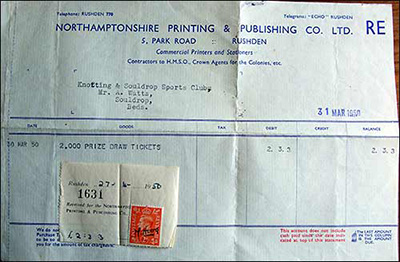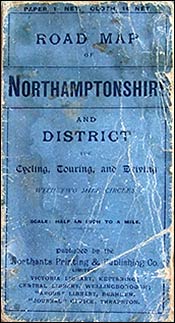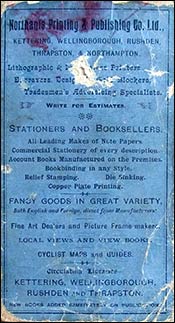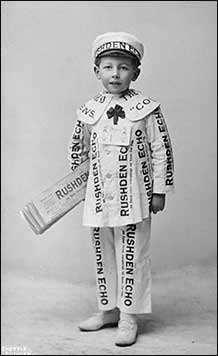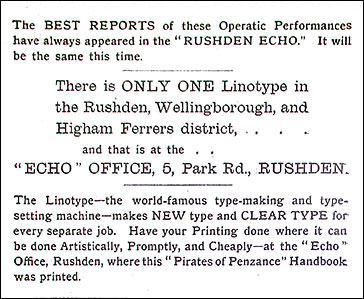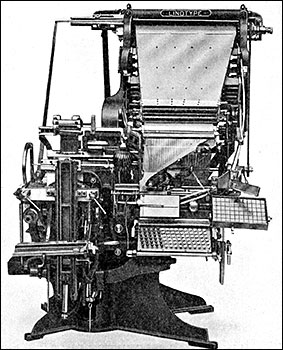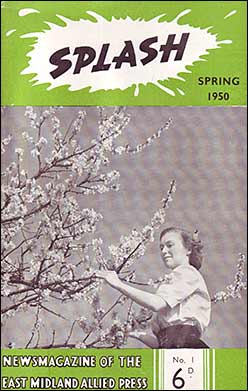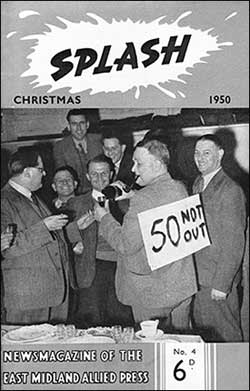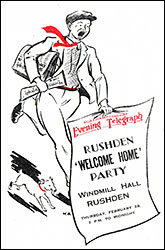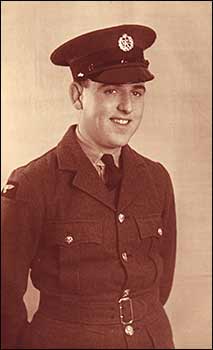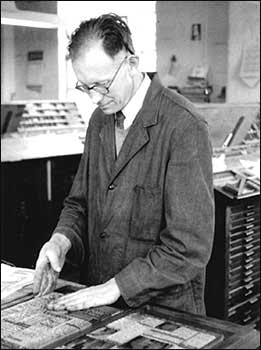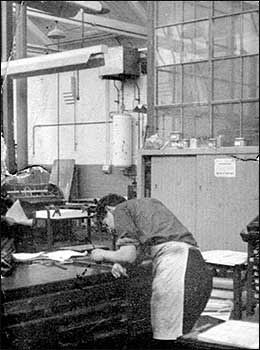Splash Magazine, Summer 1953, p18
They Worked in Blue-Tinted Specs on 'Golden Edition'
ANYONE who knows India might have thought that they had wandered into the office of a Sikh paper and that Felce Singh, Cresswell Singh and their merry men were turning out a vernacular journal for dispatch by bullock cart. [Fred Felce and Harry Creswell]
But no—it was Rushden Park Road, even though everybody had suddenly taken to wearing blue turbans, and grimy faces looked like bearded ones. The strange headgear was a protection against blue ink, which filled the air like a mist.
The job on which the Phoenix was puffing and rumbling away was the special E.M.A.P. blue and gold Coronation issue—twenty pages of art paper, over 60 pictures in royal blue, all the text in gold, interleave dwith tissue paper, tied with a silken cord, and between gold-printed covers of cartridge paper.
Rushden has never been prouder of a printing job—nor with better cause. The issue was out by the Monday morning after the Coronation, and was very soon snapped up.
Then Park Road went on with a reprint. The job was one that required meticulous accuracy, and a good deal of overtime had to be worked, but the staff managed without outside assistance.
The blue and gold edition grew naturally from a sixteen-page pre-Coronation supplement issued to cover all Group areas.
It was first planned by Group directors and representatives under Mr. Winfrey, and delegated to R. Parkin, L. J. Bartley, and T. Ireson to thrash out editorial details, while W. H. Lumby took overall charge of advertising.
The supplement was printed at Kettering and Peterborough, but was produced mainly at Kettering, which received advertisement type from the other Group offices.
This consisted of "prestige" advertising, obtained through special efforts by advertisement staffs throughout the Group and set at the offices concerned. Those responsible were specially concerned to see that displays were artistic and dignified, in keeping with editorial matter about the Queen and the Royal Family.
So many galleys had to be handled that they overflowed from the case room and were stacked temporarily in the corridor joining editorial departments.
The whole of the work was put through without interrupting the normal timetable of departments. Arthur Jaggs did most of the precise page make-up, assisted in the later stages by Sydney Smith.
Pressure was particularly heavy on the stereo departments, where Dan Clarke and his team cast altogether 230 plates. All blocks were made by process manager George Howell, and pressroom teams at Kettering and Peterborough co-operated in solving difficulties connected with printing such a many-pictured issue.
After this pre-Coronation issue was printed, all type and blocks were sent to Rushden, where they were "split-up" into two colours for use in the blue and gold post-Coronation issue, plus pictures of the Coronation.
On Coronation night, to make blocks of the Coronation scenes in the Abbey and the procession, George Howell, though facing a full programme of Coronation work next day, worked al! night, assisted from the early hours by. Gordon Rose.
The Jaggs-Smith combine, with Dan Clarke, were also in from an early hour so that all additional pases for the blue and gold edition were cleared to Rushden during the morning without impeding the normal day's work. Thanks for magnificent co-operation all round come from T. Ireson, who did editorial and layout.
Why 'Splash' is Late - 1953
RUSHDEN Park Road has been rather busy lately! First the Coronation Souvenir (two editions), Warwick County Records, and then amongst other things Peterborough Show Catalogue—320 pages with 4 pp. map and 4 pp. cover; 40 galleys of entries. All this has been done on the premises with our own staff. Of course, we had some shifts and some overtime, but that had to be. The point is, however, only team-work can achieve such results. And it is! F.G.F.
|
|
